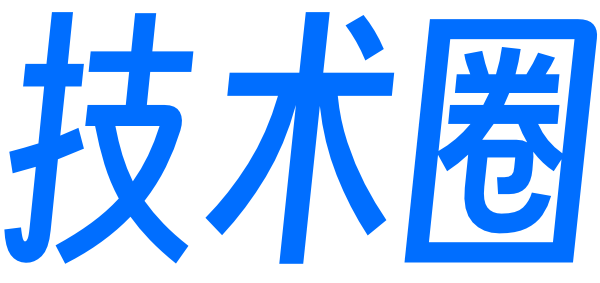Vue中的Class Component使用指南

作者 | CherishTheYouth
来源 | https://www.cnblogs.com/CherishTheYouth/
一般性指引
import vue from 'vue'import Component from 'vue-class-component'// HelloWorld class will be a Vue component@Componentexport default class HelloWorld extends Vue {}
Data属性
data属性初始化可以被声明为类的属性。
<template><div>{{ message }}</div></template><script>import Vue from 'vue'import Component from 'vue-class-component'@Componentexport default class HelloWorld extends Vue {// Declared as component datamessage = 'Hello World!'}</script>
上面的组件,将message渲染到div元素种,作为组件的 data
需要注意的是,如果未定义初始值,则类属性将不会是相应式的,这意味着不会检测到属性的更改:
import Vue from 'vue'import Component from 'vue-class-component'@Componentexport default class HelloWorld extends Vue {// `message` will not be reactive valuemessage = undefined}
为了避免这种情况,可以使用 null 对值进行初始化,或者使用 data()构造钩子函数,如下:
import Vue from 'vue'import Component from 'vue-class-component'@Componentexport default class HelloWorld extends Vue {// `message` will be reactive with `null` valuemessage = null// See Hooks section for details about `data` hook inside class.data() {return {// `hello` will be reactive as it is declared via `data` hook.hello: undefined}}}
Methods属性
组件方法可以直接声明为类的原型方法:
<template><button v-on:click="hello">Click</button></template><script>import Vue from 'vue'import Component from 'vue-class-component'@Componentexport default class HelloWorld extends Vue {// Declared as component methodhello() {console.log('Hello World!')}}</script>
Computed Properties(计算属性)
计算属性可以声明为类属性getter/setter:
<template><input v-model="name"></template><script>import Vue from 'vue'import Component from 'vue-class-component'@Componentexport default class HelloWorld extends Vue {firstName = 'John'lastName = 'Doe'// Declared as computed property getterget name() {return this.firstName + ' ' + this.lastName}// Declared as computed property setterset name(value) {const splitted = value.split(' ')this.firstName = splitted[0]this.lastName = splitted[1] || ''}}</script>
Hooks
data()方法,render()方法和所有的声明周期钩子函数,也都可以直接声明为类的原型方法,但是,不能在实例本身上调用它们。
当声明自定义方法时,注意命名不要与这些hooks方法名相冲突。
import Vue from 'vue'import Component from 'vue-class-component'@Componentexport default class HelloWorld extends Vue {// Declare mounted lifecycle hookmounted() {console.log('mounted')}// Declare render functionrender() {return <div>Hello World!</div>}}
Other Options
对于其他所有选项,则需要将其写到注解 @Component中。
<template><OtherComponent /></template><script>import Vue from 'vue'import Component from 'vue-class-component'import OtherComponent from './OtherComponent.vue'@Component({// Specify `components` option.// See Vue.js docs for all available options:// https://vuejs.org/v2/api/#Options-Datacomponents: {OtherComponent}})export default class HelloWorld extends Vue {firstName = 'John'lastName = 'Doe'// Declared as computed property getterget name() {return this.firstName + ' ' + this.lastName}// Declared as computed property setterset name(value) {const splitted = value.split(' ')this.firstName = splitted[0]this.lastName = splitted[1] || ''}// Declare mounted lifecycle hookmounted() {console.log('mounted')}// Declare render functionrender() {return <div>Hello World!</div>}}</script>
如果你使用一些Vue插件(如Vue Router),你可能希望类组件解析它们提供的钩子。在这种情况下,可以只用Component.registerHooks来注册这些额外的钩子:
class-component-hooks.js 是一个单独的文件,需要新建,然后倒入到 main.ts中,或者直接在 main.ts中进行注册。
// class-component-hooks.jsimport Component from 'vue-class-component'// Register the router hooks with their namesComponent.registerHooks(['beforeRouteEnter','beforeRouteLeave','beforeRouteUpdate'])
main.ts
// main.js// Make sure to register before importing any componentsimport './class-component-hooks'import Vue from 'vue'import App from './App'new Vue({el: '#app',render: h => h(App)})
在注册完这些钩子后,在类组件中,可以把它们当成类的原型方法来使用:
import Vue from 'vue'import Component from 'vue-class-component'@Componentexport default class HelloWorld extends Vue {// The class component now treats beforeRouteEnter,// beforeRouteUpdate and beforeRouteLeave as Vue Router hooksbeforeRouteEnter(to, from, next) {console.log('beforeRouteEnter')next()}beforeRouteUpdate(to, from, next) {console.log('beforeRouteUpdate')next()}beforeRouteLeave(to, from, next) {console.log('beforeRouteLeave')next()}}
建议将注册的过程,写到一个单独的文件中,因为注册的过程必须在任何组件定义和导入之前进行。
通过将钩子注册的import语句放在main.ts的顶部,可以确保执行顺序:
// main.js// Make sure to register before importing any componentsimport './class-component-hooks'import Vue from 'vue'import App from './App'new Vue({el: '#app',render: h => h(App)})
Custom Decorators(自定义装饰器)
你可以通过自定义装饰器来扩展此库的功能。
Vue-class-component 提供了 createDecorator帮助器 来创建自定义装饰器。
createDecorator的第一个参数为一个回调函数,这个回调函数接收如下参数:
options:一个Vue组件Options 对象,此对象的改变将会直接影响到相应的组件。
key:装饰器提供的属性或方法的键值。
parameterIndex:参数索引,如果自定义装饰器被用来装饰参数,则parameterIndex 用来表示参数的索引。
以下是一个创建一个日志装饰器的示例程序,该装饰器的作用是:
当被装饰的方法被调用时,打印该方法的方法名和传递进来的参数。
// decorators.jsimport { createDecorator } from 'vue-class-component'// Declare Log decorator.export const Log = createDecorator((options, key) => {// Keep the original method for later.const originalMethod = options.methods[key]// Wrap the method with the logging logic.options.methods[key] = function wrapperMethod(...args) {// Print a log.console.log(`Invoked: ${key}(`, ...args, ')')// Invoke the original method.originalMethod.apply(this, args)}})
将其作为方法装饰器使用:
import Vue from 'vue'import Component from 'vue-class-component'import { Log } from './decorators'@Componentclass MyComp extends Vue {// It prints a log when `hello` method is invoked.@Loghello(value) {// ...}}
当hello()执行时,参数为 42 时,其打印结果为:
Invoked: hello( 42 )
Extends
可以通过继承的方式,扩展一个已有的类。假设你有一个如下的超类组件:
// super.jsimport Vue from 'vue'import Component from 'vue-class-component'// Define a super class component@Componentexport default class Super extends Vue {superValue = 'Hello'}
你可以通过如下的类继承语法来扩展它:
import Super from './super'import Component from 'vue-class-component'// Extending the Super class component@Componentexport default class HelloWorld extends Super {created() {console.log(this.superValue) // -> Hello}}
需要注意的是,每个超类型都必须是类组件。换句话说,它需要继承Vue构造函数作为基类,并且,必须要有@Component装饰器进行装饰。
Mixins
vue-class-component 提供mixins帮助器,使其支持以类的风格使用 mixins.
通过使用mixins帮助器,TypeScript可以推断mixin类型并在组件类型上继承它们。
以下是一个声明 Hello 和 World Mixins的示例:
// mixins.jsimport Vue from 'vue'import Component from 'vue-class-component'// You can declare mixins as the same style as components.@Componentexport class Hello extends Vue {hello = 'Hello'}@Componentexport class World extends Vue {world = 'World'}
在一个类组件中使用它们:
import Component, { mixins } from 'vue-class-component'import { Hello, World } from './mixins'// Use `mixins` helper function instead of `Vue`.// `mixins` can receive any number of arguments.@Componentexport class HelloWorld extends mixins(Hello, World) {created () {console.log(this.hello + ' ' + this.world + '!') // -> Hello World!}}
和Extends中的超类一样,所有的mixins都必须定义为类式组件。
Caveats of Class Component(类组件的注意事项)
属性初始化时的 this 值的问题
如果你用箭头函数的形式,定义一个类属性(方法),当你在箭头函数中调用 this 时,这将不起作用。这是因为,在初始化类属性时,this只是Vue实例的代理对象。
import Vue from 'vue'import Component from 'vue-class-component'@Componentexport default class MyComp extends Vue {foo = 123// DO NOT do thisbar = () => {// Does not update the expected property.// `this` value is not a Vue instance in fact.this.foo = 456}}
在这种情况下,你可以简单的定义一个方法,而不是一个类属性,因为Vue将自动绑定实例:
import Vue from 'vue'import Component from 'vue-class-component'@Componentexport default class MyComp extends Vue {foo = 123// DO thisbar() {// Correctly update the expected property.this.foo = 456}}
应当总是使用声明周期钩子而非使用构造函数
由于原始的构造函数已经被使用来收集初始组件的 data数据。因此,建议不要自行使用构造函数。
import Vue from 'vue'import Component from 'vue-class-component'@Componentexport default class Posts extends Vue {posts = []// DO NOT do thisconstructor() {fetch('/posts.json').then(res => res.json()).then(posts => {this.posts = posts})}}
上面的代码打算在组件初始化时获取post列表,但是由于Vue类组件的工作方式,fetch过程将被调用两次。
建议使用组件声明周期函数,如 creatd() 而非构造函数(constructor)。
TypeScript使用指引
属性定义(Props Definition)
Vue-class-component 没有提供属性定义的专用 Api,但是,你可以使用 canonical Vue.extend API 来完成:
<template><div>{{ message }}</div></template><script lang="ts">import Vue from 'vue'import Component from 'vue-class-component'// Define the props by using Vue's canonical way.const GreetingProps = Vue.extend({props: {name: String}})// Use defined props by extending GreetingProps.@Componentexport default class Greeting extends GreetingProps {get message(): string {// this.name will be typedreturn 'Hello, ' + this.name}}</script>
由于Vue.extend会推断已定义的属性类型,因此可以通过继承它们在类组件中使用它们。
如果你同时还需要扩展 超类组件 或者 mixins 之类的,可以使用 mixins 帮助器 将定义的属性和 超类组价,mixins 等结合起来:
<template><div>{{ message }}</div></template><script lang="ts">import Vue from 'vue'import Component, { mixins } from 'vue-class-component'import Super from './super'// Define the props by using Vue's canonical way.const GreetingProps = Vue.extend({props: {name: String}})// Use `mixins` helper to combine defined props and a mixin.@Componentexport default class Greeting extends mixins(GreetingProps, Super) {get message(): string {// this.name will be typedreturn 'Hello, ' + this.name}}</script>
属性类型声明(Property Type Declaration)
有时候,你不得不在类组件之外定义属性和方法。
例如,Vue的官方状态管理库 Vuex 提供了 MapGetter 和 mapActions帮助器,用于将 store 映射到组件属性和方法上。
这些帮助器,需要在 组件选项对象中使用。
即使在这种情况下,你也可以将组件选项传递给@component decorator的参数。
但是,当属性和方法在运行时工作时,它不会在类型级别自动声明它们。
你需要在组件中手动声明它们的类型:
import Vue from 'vue'import Component from 'vue-class-component'import { mapGetters, mapActions } from 'vuex'// Interface of postimport { Post } from './post'@Component({computed: mapGetters(['posts']),methods: mapActions(['fetchPosts'])})export default class Posts extends Vue {// Declare mapped getters and actions on type level.// You may need to add `!` after the property name// to avoid compilation error (definite assignment assertion).// Type the mapped posts getter.posts!: Post[]// Type the mapped fetchPosts action.fetchPosts!: () => Promise<void>mounted() {// Use the mapped getter and action.this.fetchPosts().then(() => {console.log(this.posts)})}}
refs类型扩展(‘r e f s 类 型 扩 展 ( ‘ refs` Type Extension)
组件的$refs类型被声明为处理所有可能的ref类型的最广泛的类型。虽然理论上是正确的,但在大多数情况下,每个ref在实践中只有一个特定的元素或组件。
可以通过重写类组件中的$refs type来指定特定的ref类型:
<template><input ref="input"></template><script lang="ts">import Vue from 'vue'import Component from 'vue-class-component'@Componentexport default class InputFocus extends Vue {// annotate refs type.// The symbol `!` (definite assignment assertion)// is needed to get rid of compilation error.$refs!: {input: htmlInputElement}mounted() {// Use `input` ref without type cast.this.$refs.input.focus()}}</script>
您可以访问input类型,而不必将类型转换为$refs。在上面的示例中,input类型是在类组件上指定的。
请注意,它应该是类型注释(使用冒号:)而不是赋值(=)。
钩子自动完成(Hooks Auto-complete)
Vue-class-component 提供了内置的钩子类型,在 TypeScript 中,它可以自动完成类组件声明中 data()、render(),及其他生命周期函数的类型推导,要启用它,您需要导入vue-class-component/hooks 中的钩子类型。
// main.tsimport 'vue-class-component/hooks' // import hooks type to enable auto-completeimport Vue from 'vue'import App from './App.vue'new Vue({render: h => h(App)}).$mount('#app')
如果你想在自定义钩子函数中使用它,你可以手动进行添加。
import Vue from 'vue'import { Route, RawLocation } from 'vue-router'declare module 'vue/types/vue' {// Augment component instance typeinterface Vue {beforeRouteEnter?(to: Route,from: Route,next: (to?: RawLocation | false | ((vm: Vue) => void)) => void): voidbeforeRouteLeave?(to: Route,from: Route,next: (to?: RawLocation | false | ((vm: Vue) => void)) => void): voidbeforeRouteUpdate?(to: Route,from: Route,next: (to?: RawLocation | false | ((vm: Vue) => void)) => void): void}}
在Decorator中注释组件类型(Annotate Component Type in Decorator)
在某些情况下,你希望在@component decorator参数中的函数上使用组件类型。例如,需要在 watch handler 中访问组件方法:
({watch: {postId(id: string) {// To fetch post data when the id is changed.this.fetchPost(id) // -> Property 'fetchPost' does not exist on type 'Vue'.}}})class Post extends Vue {postId: stringfetchPost(postId: string): Promise<void> {// ...}}
以上代码产生了一个类型错误,该错误指出,属性 fetchPost 在watch handler 中不存在,之所以会发生这种情况,是因为@Component decorator参数中的this类型是Vue基类型。
要使用自己的组件类型(在本例中是Post),可以通过decorator的类型参数对其进行注释。
// Annotate the decorator with the component type 'Post' so that `this` type in// the decorator argument becomes 'Post'.<Post>({watch: {postId(id: string) {this.fetchPost(id) // -> No errors}}})class Post extends Vue {postId: stringfetchPost(postId: string): Promise<void> {// ...}}
感谢阅读,本文到此结束。
学习更多技能
请点击下方公众号
![]()

